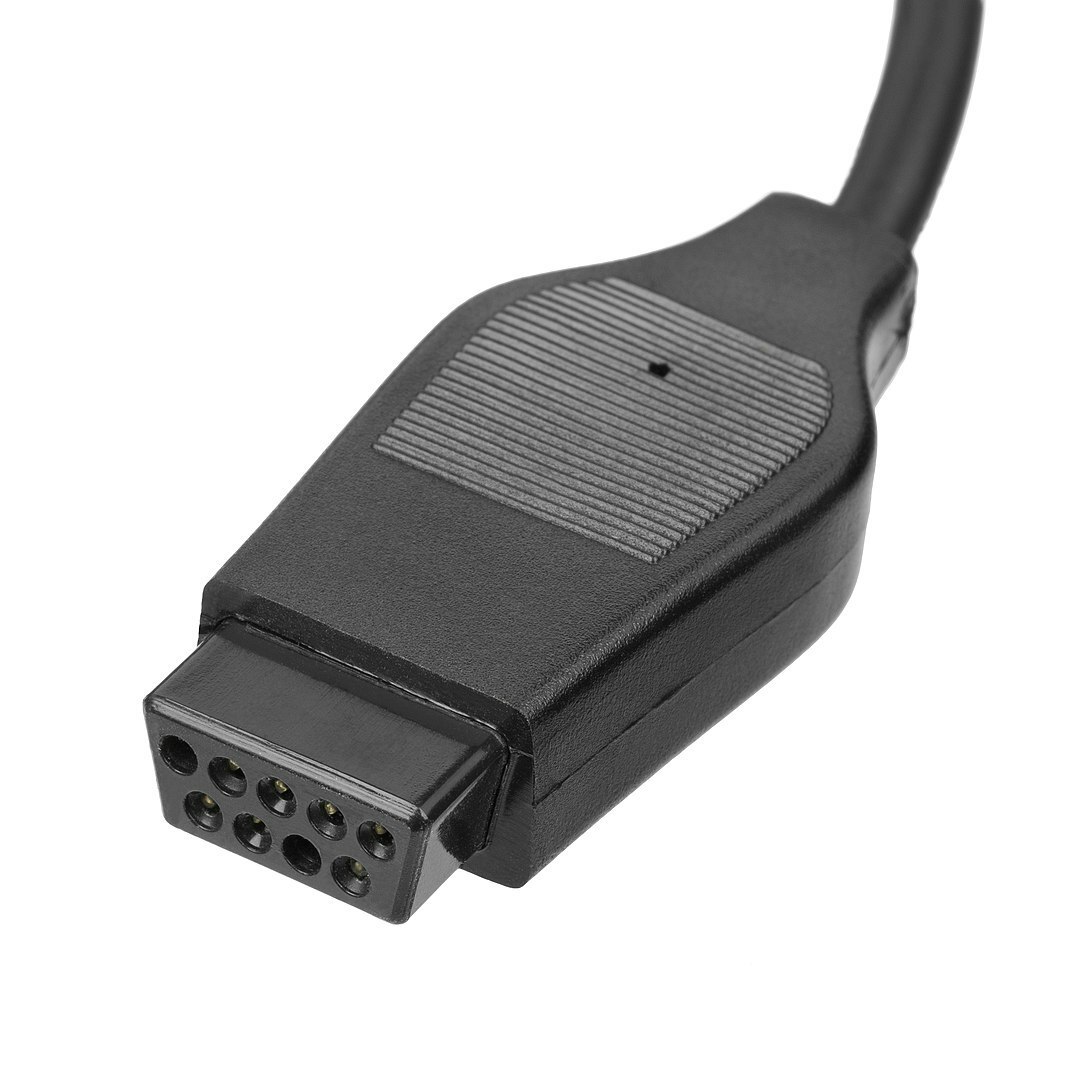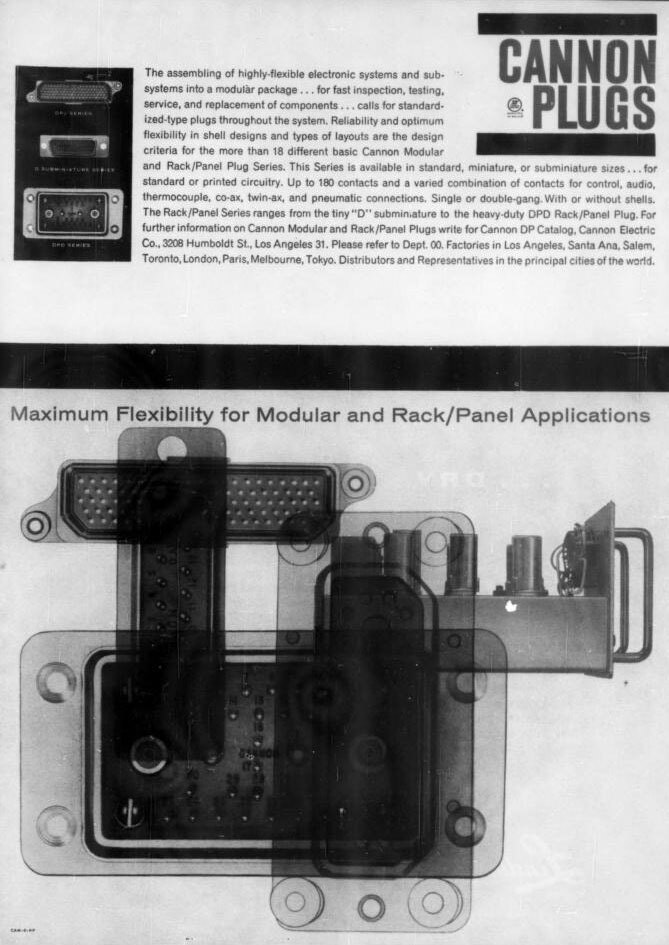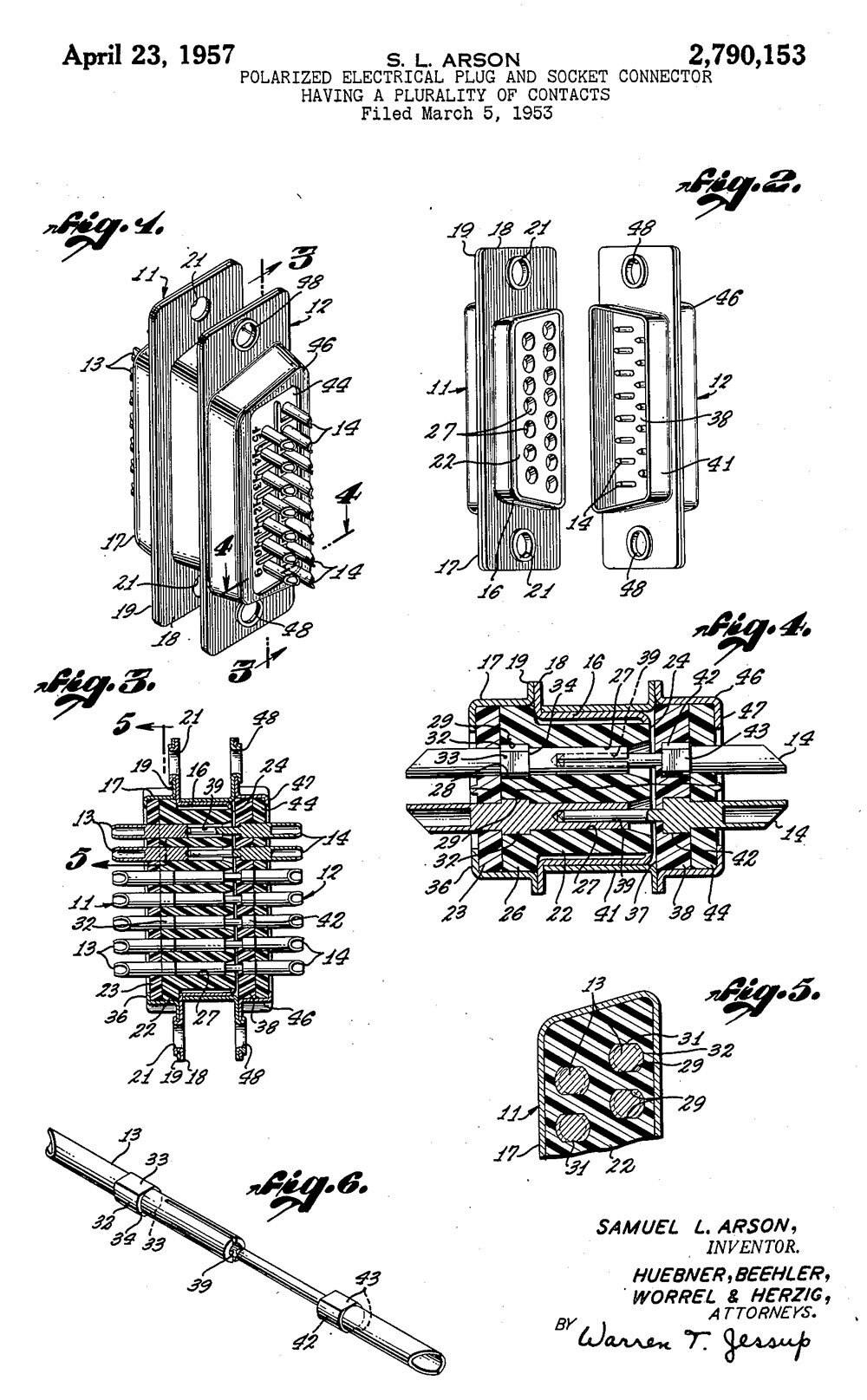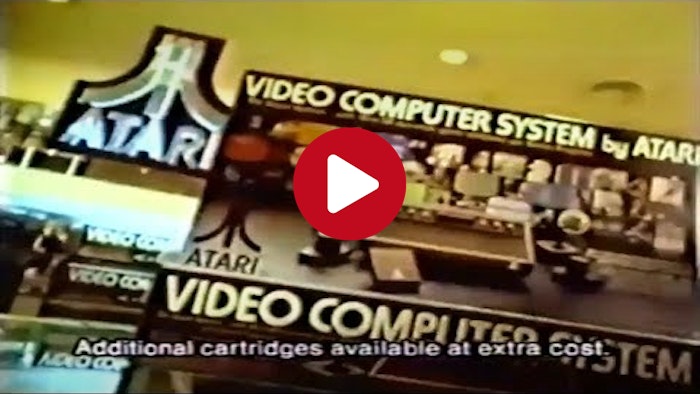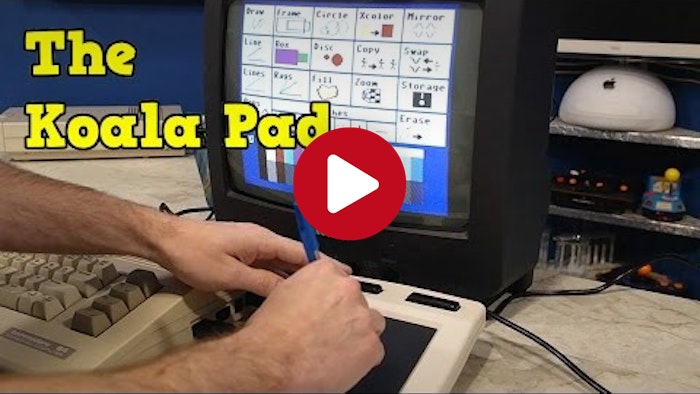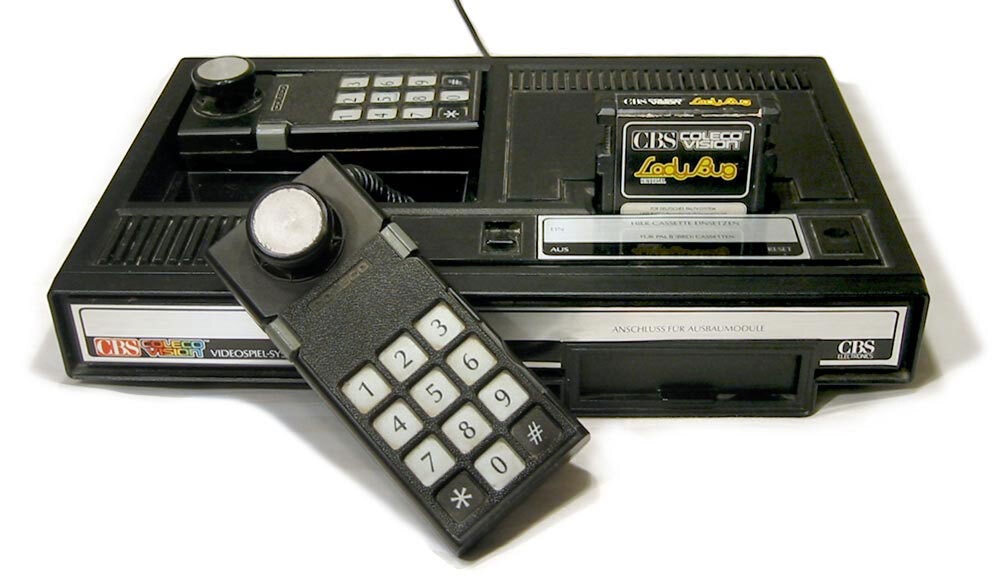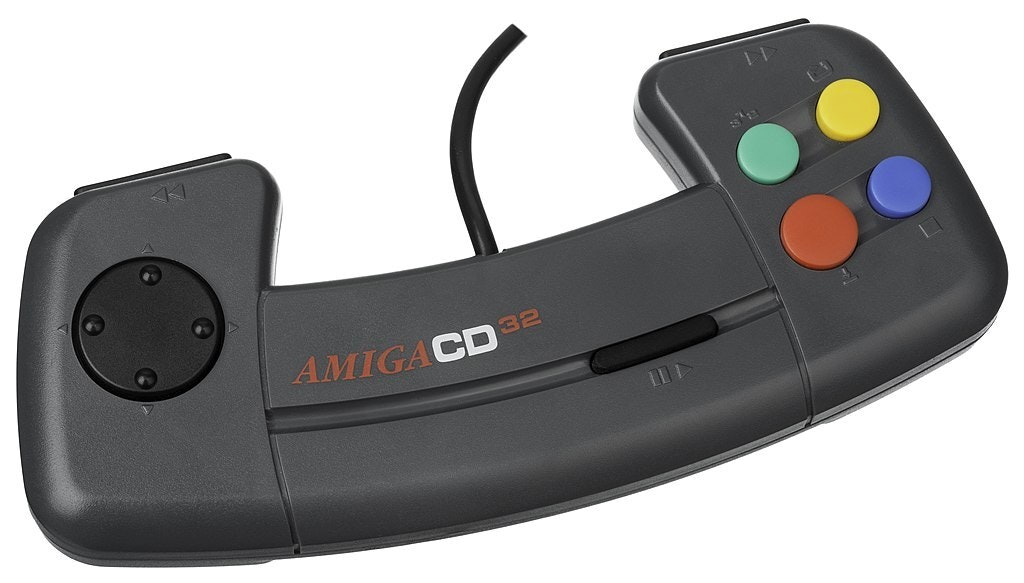| | A close-up shot of the joystick ports on an Atari 800XL. (Multicherry/Wikimedia Commons) The Evolution of the Atari joystick port, as seen through three consoles and three computer systemsThe problem with de facto standards is that the de facto nature of it means that when others inevitably latch onto the basic idea that you’ve built, they will put their own twist on it in ways that, while they work for that specific vendor or user, break things for everyone else. An obvious example of this is the browser wars. Netscape and Internet Explorer each made significant changes to the HTML spec for purely competitive reasons, changes that took years to roll back to a consistent place—perhaps the ultimate genie-back-in-the-bottle situation. In many ways, the Atari joystick port is what happens when you create a connector that everyone uses, but not everyone has agreed to how it gets used. It’s USB born in chaos and out of necessity. While most of these controllers are hardware compatible with the port, meaning you can plug them in to other systems, they aren’t necessarily software-compatible, nor will they include consistent setups. In some of these consoles—particularly the 3DO—rumors about about it actually being dangerous from an electrical standpoint to even plug some of these controllers into incompatible systems, which should tell you all you need to know about the de facto nature of the 9-pin Atari joystick port “standard.” So, with all that in mind, I want to highlight how different consoles and computers used this system. Hilariously, this list doesn’t include a single Atari console or computer. Commodore 64 | | The computer that expanded the horizons of the game port beyond just games.The Commodore 64 wasn’t the first, nor the last computer to natively support Atari-style joysticks. (The honor of first goes to the Atari 400 and 800, of course.) But the C64’s popularity—still the highest-selling home computer of all time, it outsold the Atari home computers by a healthy margin—did a lot to turn the port into something of a mainstream entity and expanded its potential use cases. The joystick port was used for things such as mice, light pens, and graphics tablets, helping to stretch the platform’s capabilities. One particularly notable entrant on the joystick port front was the KoalaPad, a graphics tablet that could be controlled with a finger or stylus, effectively making it one of the first touchpads on the market, more than a decade before the technology went mainstream. The KoalaPad (featured by The 8-Bit Guy in 2016) wasn’t only used on the C64—it was available for the Apple II, IBM PC, and TRS-80, along with Atari’s 8-bit line of computers—but it ultimately found its niche with the Commodore machine. Colecovision | | (Fritz Saalfeld/Wikimedia Commons) The HBO Max of Atari 2600 competitors.While the Colecovision shared the same physical port as the Atari 2600, in its default form it was significantly more complex than the earlier system thanks to its nine-button number pad, something that was only offered as an accessory for the Atari console. “The Coleco controller is not as unwieldy as it may look, but it’s close,” the website Gametrog stated. “It’s not very ergonomic, but when working it gets the job done.” The Colecovision console, despite being on the market for only about two years, had a reputation as a high-quality video game console that could produce arcade-quality graphics. The success of the system extended to the controls, which included a variety of accessories that used the controller port, including a trackball, a steering wheel, and a “super action controller,” which combined many of the more complex functionalities of the Colecovision’s controls into a more handheld format. While Atari 2600 or 7800 controllers could work with the system, they required aftermarket adapters to reach their full potential because of the difference in the number of buttons. Commodore Amiga | | This infamous game controller has a 9-pin port at the other end. (Evan Amos/Wikimedia Commons) The computer that treated the 9-pin port like a standard.It makes sense, given the corporate connection between Commodore and Atari as rivals who, at different times, shared an owner that the companies would share some common ground in certain areas of their computing experience. And while the Amiga was a huge leap forward for computing technology, it leveraged the same gamepad ports of its predecessors—and unlike later systems such as the Genesis, it was essentially fully compatible with the 2600. That wasn’t true of every model, however; the later CD32 system, an attempt by Commodore to consolize the Amiga, leveraged some slightly different control schemes internally to support additional buttons. Nonetheless, if you plugged the controller into an Atari 2600 and hit the big red button, it would work—not that you would necessarily want to, as that specific controller design frequently appears on worst controller lists. Amstrad PC1512 | | A PC-compatible system that supported Atari-style joysticks … through the keyboard.Amstrad was by no means a newbie to using Atari-compatible joystick ports, utilizing the port design on its better-known Amstrad CPC line of machines. But what makes the PC1512 an interesting discussion point in this context is the decision by the British company to largely eschew the IBM PC’s prevailing approach to input devices, meaning that its mouse would often have compatibility issues with PC apps that used it. The joystick port was extra-bizarre in the context of the IBM, because it was essentially a 9-pin Atari joystick port that could be mapped to keyboard controls—which actually made it very flexible for most games, which had keyboard controls baked in, as the YouTube channel Retro Erik notes in a 2018 video. Sega Genesis | | The most popular console that utilized the Atari joystick port wasn’t made by Atari.Odds are good that a huge percentage of the people who played the Sega Genesis never had an Atari system. The Genesis, when all was said and done, sold around 40 million units worldwide, according to Sega Retro, meaning that, globally, it actually outsold the 30-million-units-strong Atari 2600 by a huge margin. Interestingly, the system maintained a backward compatibility with both the Atari system and older Sega consoles through the DE-9 connector—though, as with the Amiga, it wasn’t quite an apples-to-apples setup. Generally, a Genesis controller works well enough on a single-button Atari 2600, but all bets are off on later multi-button systems. But what about doing it the other way—a single-button Atari joystick on a Sega Genesis? Some have tried, and let’s just say that the awkwardness speaks for itself. 3DO Interactive Multiplayer | | The proprietary controller port that, if you squint right, looks like an Atari joystick port.Now, don’t get me wrong—I know how many fans of Plumbers Don’t Wear Ties and Gex there are out there—but the 3DO had a somewhat bad controller reputation, with graphically-impressive games like Way of the Warrior getting ripped by publications of the day, like EGM, for having horrid controls. Some of the issues with the controls came down to the console’s spec—particularly the decision to daisy-chain the controllers rather than just having a second controller port, meaning that the second player was always in danger of being physically affected by the actions of the first player. While the physical design of the controller itself wasn’t necessarily hated, it was arguably the weakest link of the system. “It’s what would happen if a Sega Genesis controller mated with a Super Nintendo controller,” the OG video game channel Classic Game Room recalled. From a port standpoint, it was something of an anomaly. It largely followed the DE-9 approach of earlier consoles, but the shape of the connector was much closer to a traditional computer serial port. And unlike most controllers that utilized this design, it sent control signals in a fully digital format, meaning that it’s a bad idea to plug a Genesis controller into one of these ports. In a way, it was a bridge between the last generation of systems that relied on the Atari port and the next generation, which would be predicated on digital controls. |
|


